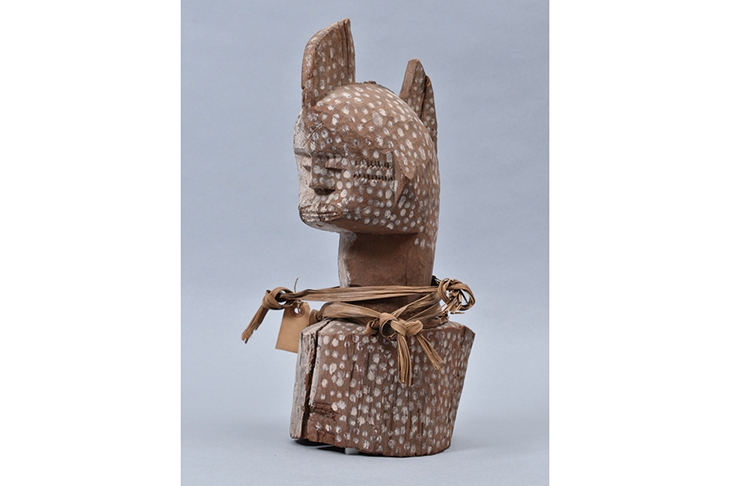Perhaps we should blame Vasari. Ever since the publication of his Lives of the Artists, and to an ever-increasing extent, the world of art has been governed by the star system. In other words, the first question likely to be asked about a painting or sculpture is whodunit? And if the answer turns out to be, not Leonardo da Vinci — as has been suggested in the case of the controversial ‘Salvator Mundi’ — then the price tag becomes enormously smaller.
Does this matter? Artist Unknown, a little exhibition at Kettle’s Yard, Cambridge, investigates the case of the anonymous work. This draws on the rich resources of the museums of Cambridge — which include, of course, the Fitzwilliam, but also collections devoted to archaeology and anthropology, science, polar exploration and many other subjects.
Some of the things on display could be hung on the walls of Tate Modern without causing any surprise. A magnificent piece of Fijian barkcloth, consisting of vigorous black and white lozenges, stripes and triangles (see p27), has all the visual energy and authority that you might expect from a great abstract painting. Indeed, over the past century, many such objects have been shifted from ethnographic museums to museums of art. The Met in New York, for instance has galleries devoted to the arts of Oceania, filled with works just like this.
Another fabulous textile in the exhibition, a rectangle of brilliantly coloured embroidery worn by Zoroastrian women as decorations on their trousers, is actually part of the collection at Kettle’s Yard itself. Jim Ede, the founder and creator of this remarkable house-cum-modern art gallery, was given these Iranian trouser cuffs by a friend who had once worked as a secret agent.
Ede — a modernist who derived his ideas from Ben Nicholson, who got them in turn from Mondrian — would have had no trouble in classifying these stripy Zoroastrian embroideries as art. Or rather, in placing them in the egalitarian arrangement of his beautiful interiors in which pebbles, feathers and bits of battered china picked up in junk shops are placed side by side with works by Brancusi and Miro.
Taking items from everyday life and categorising them as ‘art’ was, of course, a standard modernist move. Duchamp’s bicycle wheel, snow shovel and urinal are famous examples but far from being the only ones. On show at Kettle’s Yard there are a number of items that you wouldn’t normally think of as art, but could quite easily be re-defined in this way. A skilfully stuffed putty-nosed monkey — a type of West African primate — is a virtuoso demonstration of the taxidermist’s skills. But Damien Hirst, among others, has made it quite easy to see it as art.
The case of an anonymous 19th-century painting of a woman is rather different. Nobody would dispute the fact that it’s a work of art. It looks a bit like a Degas, which is what its erstwhile owner — the art dealer and scholar Lillian Browse — apparently thought it was. But considered as a Degas, to use the art world dismissal, it does not look quite ‘right’.
Instead, like so many other pictures, it must be attributed to ‘anonymous’. Does that matter? Neil MacGregor once gave a lecture entitled ‘A Victim of Anonymity’, in which he argued in favour of one of those faceless figures who exist only as an art-historical hypothesis: the ‘Master of the Saint Bartholomew Altarpiece’. This person seems to have been an outstanding painter of the 15th century. But lacking a name or even a clear nationality — he might have been German, but possibly Flemish — it is unlikely that books or exhibitions will be devoted to his work.
So in such practical ways names definitely matter. But should they? One of the sharpest disagreements I ever had with Lucian Freud was about this point. He insisted that it mattered not at all whether a certain picture was by him or by a forger. He believed any painting should be judged solely according to its merits.
In fact, the Kettle’s Yard exhibition also contains some forgeries: scientific instruments purportedly made in the 16th century, but which were actually created in the 1920s. Again, does this matter?
Actually, I still disagree with Lucian about this. I couldn’t look at a clever imitation of his style with the same interest as I would a genuine Freud, nor am I as happy to look at a fake 16th-century astrolabe as I am the real thing. But perhaps that is just superstition. This little show only occupies one gallery, but raises numerous intriguing questions.






Comments